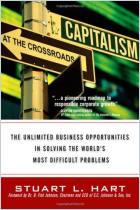Join getAbstract to access the summary!

Join getAbstract to access the summary!
Calestous Juma
Innovation and Its Enemies
Why People Resist New Technologies
Oxford UP, 2016
What's inside?
How is the printing press like margarine? Both innovations met opposition from some elements of society.
Recommendation
This compelling overview retells the history of innovation and highlights why people resist new technologies. Calestous Juma, founding director of the African Centre for Technology Studies in Nairobi, recounts case studies of opposition to innovation that touch on electricity, margarine, the introduction of coffee and mechanical refrigeration. Juma writes with great compassion about resistance to innovation as he explains different viewpoints stemming from various aspects of religion, culture and economic self-interest. getAbstract recommends his treatise to anyone interested in history, technology and culture, and to anyone responsible for making policy.
Summary
About the Author
Calestous Juma is the founding director of the African Centre for Technology Studies in Nairobi and foreign associate of the US National Academy of Sciences.





















Comment on this summary
Producing legumes is the supply side.